-
 Bitcoin
Bitcoin $94,357.1547
-1.78% -
 Ethereum
Ethereum $1,799.2884
-2.02% -
 Tether USDt
Tether USDt $1.0000
-0.02% -
 XRP
XRP $2.1599
-2.27% -
 BNB
BNB $588.2103
-1.94% -
 Solana
Solana $144.9680
-1.18% -
 USDC
USDC $1.0000
0.01% -
 Dogecoin
Dogecoin $0.1709
-3.29% -
 Cardano
Cardano $0.6777
-4.43% -
 TRON
TRON $0.2488
0.57% -
 Sui
Sui $3.3247
0.98% -
 Chainlink
Chainlink $13.9783
-2.41% -
 Avalanche
Avalanche $20.1607
-1.49% -
 UNUS SED LEO
UNUS SED LEO $9.0621
0.88% -
 Stellar
Stellar $0.2679
-1.50% -
 Shiba Inu
Shiba Inu $0.0...01283
-1.94% -
 Toncoin
Toncoin $3.0225
-2.19% -
 Hedera
Hedera $0.1768
-3.24% -
 Bitcoin Cash
Bitcoin Cash $355.7577
-2.97% -
 Hyperliquid
Hyperliquid $20.2802
-2.11% -
 Litecoin
Litecoin $85.9280
-0.76% -
 Polkadot
Polkadot $3.9901
-1.16% -
 Dai
Dai $1.0000
0.01% -
 Monero
Monero $275.6374
-0.57% -
 Bitget Token
Bitget Token $4.3022
-1.52% -
 Ethena USDe
Ethena USDe $1.0004
-0.01% -
 Pi
Pi $0.5904
-0.04% -
 Pepe
Pepe $0.0...08209
0.20% -
 Aptos
Aptos $5.1702
-0.43% -
 Uniswap
Uniswap $5.0460
-1.11%
btc currency wallet address
A Bitcoin wallet address, like "1Bqx24mFD1jhw5kYcBCs4zLt4A1w6B2QJd," consists of a unique combination of letters and numbers, serving as a virtual mailbox to store and receive BTC.
Jan 12, 2025 at 05:58 am
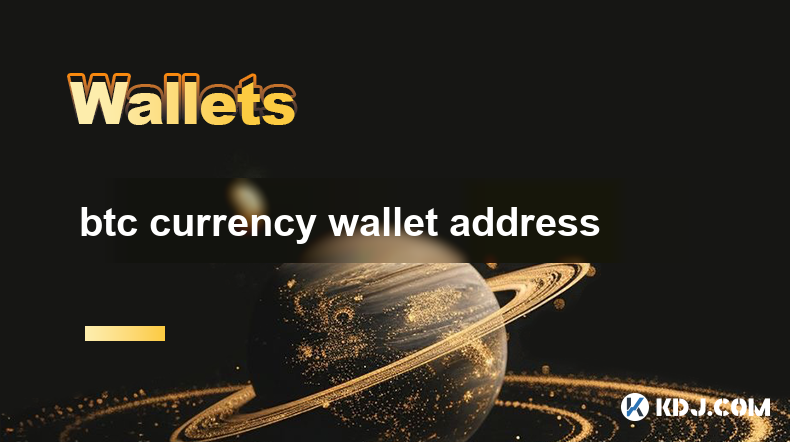
Understanding the Key Elements of a Bitcoin (BTC) Wallet Address
Key Points:
- Structure and components of a BTC wallet address
- Types and formats of wallet addresses
- Creating and managing your own BTC wallet address
- Best practices for handling and securing BTC wallet addresses
- FAQs addressing common questions related to BTC wallet addresses
Understanding the Structure of a BTC Wallet Address
A Bitcoin wallet address resembles a complex combination of letters and numbers, serving as a unique identifier for receiving and storing BTC. It typically comprises the following:
Prefix: A unique prefix denotes the type of address, such as "1" for standard legacy addresses or "3" for SegWit addresses.
Checksum: The checksum, generated from the rest of the address, ensures its validity and detects any potential errors during transmission.
Version Byte: This byte indicates the address format, such as "00" for Pay-to-Public-Key-Hash (P2PKH) or "05" for Pay-to-Script-Hash (P2SH).
Types and Formats of BTC Wallet Addresses
Legacy Addresses (P2PKH): Starting with "1," P2PKH addresses directly receive and hold BTC. They are simple to use but offer limited security compared to other address types.
SegWit Addresses (P2SH-P2WPKH, bc1): SegWit addresses employ Segregated Witness, enhancing both security and transaction efficiency. They begin with "bc1" and require specialized wallet support.
MultiSignature Addresses (P2SH, M-of-N): MultiSignature addresses require multiple signatures (approvals) to spend funds, increasing security for shared wallets or group accounts.
How to Create and Manage Your BTC Wallet Address
- Choose a Reputable Wallet: Select a trusted cryptocurrency wallet that supports BTC and the address formats you prefer.
- Generate a New Address: Within your wallet, navigate to the "Create New Address" option to generate a unique BTC wallet address.
- Save and Protect: Copy and store your new address securely in multiple locations, including password-protected notes or hardware wallets. Avoid sharing your address publicly.
- Send and Receive BTC: Share your address with others to receive BTC from external wallets. To send BTC, enter the recipient's address into the relevant field within your wallet interface.
Best Practices for Handling and Securing BTC Wallet Addresses
- Avoid Public Sharing: Protect your privacy and security by not sharing your wallet address on public forums or social media.
- Use Strong Passwords: Safeguard your wallet and the associated private keys with complex, unique passwords.
- Enable Two-Factor Authentication (2FA): Add an extra layer of security to your wallet by enabling 2FA for logins and transactions.
- Consider Hardware Wallets: For enhanced security, store your private keys and addresses offline in a hardware wallet, designed specifically for cryptocurrency storage.
FAQs:
1. Can I receive BTC from different types of addresses into my single wallet address?
Yes, you can receive BTC from any BTC wallet address into a single wallet address. The wallet will automatically identify and process the incoming transaction based on the address type.
2. How does SegWit improve my wallet address security?
SegWit addresses separate the signature data from the transaction, making it more difficult for attackers to exploit transaction malleability. This enhanced security feature helps protect your funds from potential theft.
3. What is the difference between P2PKH and P2SH addresses?
P2PKH addresses directly store BTC, while P2SH addresses point to a hash of the actual BTC script, allowing for more complex transaction conditions, such as multiSignature setups. P2SH addresses are commonly used for multiSignature and other advanced wallet setups.
4. How can I recognize a scam wallet address?
Scam wallet addresses often share similar characteristics to legitimate addresses but may include subtle alterations in spelling or formatting. Always cross-check addresses carefully before sending any BTC.
5. What is a Hierarchical Deterministic (HD) wallet, and how does it relate to my wallet address?
An HD wallet generates multiple wallet addresses from a single master seed phrase. This eliminates the need for manually creating and managing individual addresses, simplifies address management, and enhances security.
Disclaimer:info@kdj.com
The information provided is not trading advice. kdj.com does not assume any responsibility for any investments made based on the information provided in this article. Cryptocurrencies are highly volatile and it is highly recommended that you invest with caution after thorough research!
If you believe that the content used on this website infringes your copyright, please contact us immediately (info@kdj.com) and we will delete it promptly.
- DOGE price analysis: Targeting 0.1755 - 0.1815 on rebound
- 2025-05-05 09:50:12
- Ondo Gains on Sentiment, Sei’s Deal Sparks Buzz, While Web3 ai’s 1,747% ROI Potential Gets Real Attention from Traders
- 2025-05-05 09:50:12
- Bitcoin (BTC) Is at a Pivotal Moment, Trading at a Critical Support Level of $91,200
- 2025-05-05 09:46:12
- As the cryptocurrency market heats up, seasoned investors are eyeing the next big winner with the potential for explosive returns.
- 2025-05-05 09:46:12
- Justin Sun's TRON Upgrade Met with Enthusiasm, but Hack Overshadows the Event
- 2025-05-05 09:44:56
- Will Binance Coin (BNB) Reach the Coveted $1,000 Mark in the Near Future?
- 2025-05-05 09:44:56
Related knowledge
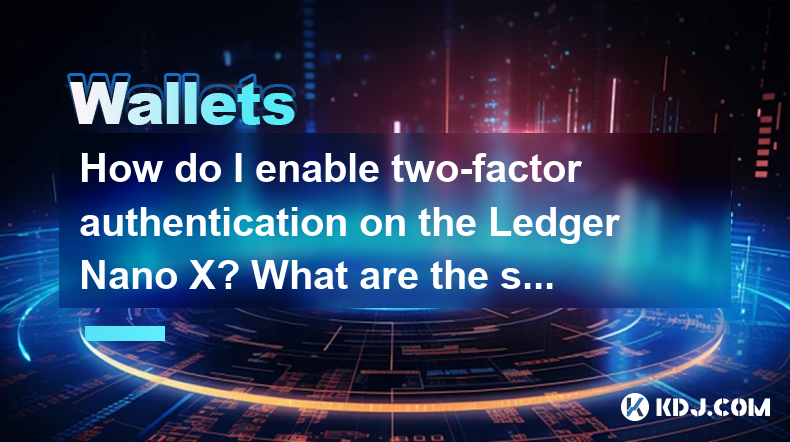
How do I enable two-factor authentication on the Ledger Nano X? What are the security options?
May 02,2025 at 09:49pm
Enabling two-factor authentication (2FA) on your Ledger Nano X is a critical step in securing your cryptocurrency assets. The Ledger Nano X offers robust security options that enhance the protection of your digital wealth. In this article, we will guide you through the process of enabling 2FA on your Ledger Nano X and explore the various security featur...
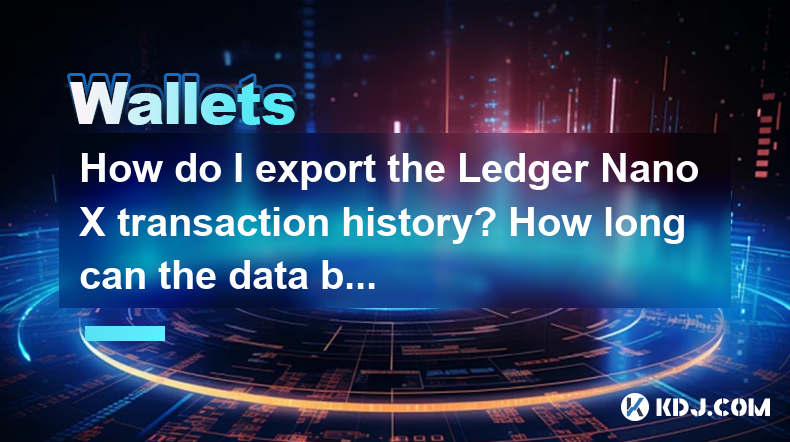
How do I export the Ledger Nano X transaction history? How long can the data be saved?
May 04,2025 at 07:21am
Introduction to Ledger Nano X and Transaction HistoryThe Ledger Nano X is a hardware wallet designed to store your cryptocurrency safely. It supports a wide range of cryptocurrencies and offers robust security features. One of the essential aspects of managing your cryptocurrencies is keeping track of your transaction history. The Ledger Nano X allows y...
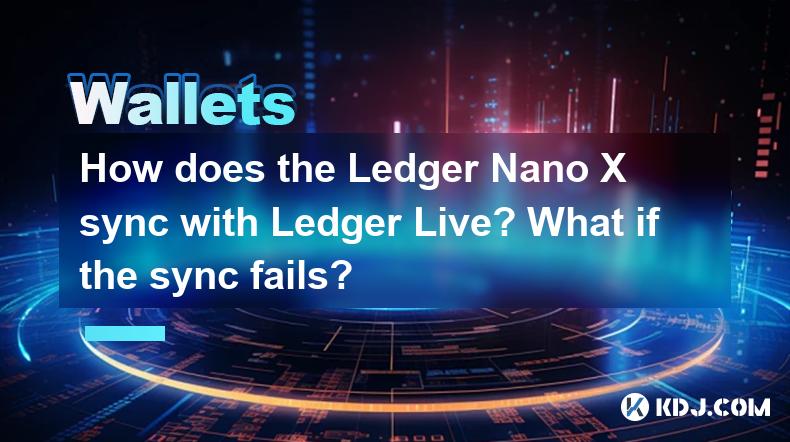
How does the Ledger Nano X sync with Ledger Live? What if the sync fails?
May 04,2025 at 12:07pm
The Ledger Nano X is a popular hardware wallet that allows users to securely manage their cryptocurrency assets. One of the key features of the Ledger Nano X is its ability to sync with the Ledger Live application, which provides a user-friendly interface for managing your crypto portfolio. In this article, we will explore how the Ledger Nano X syncs wi...
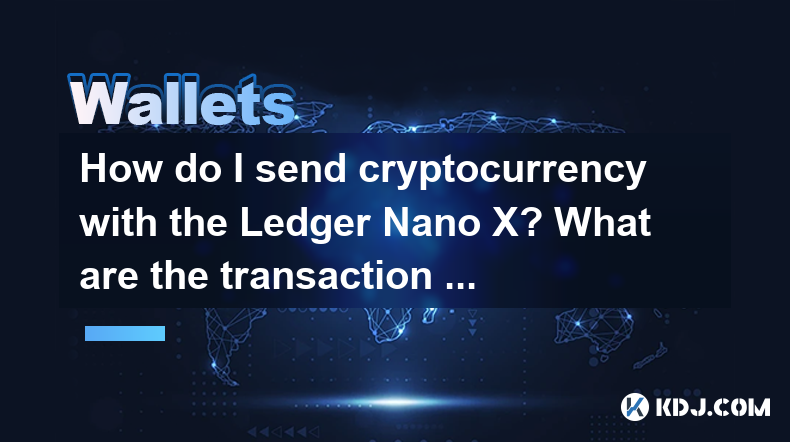
How do I send cryptocurrency with the Ledger Nano X? What are the transaction confirmation steps?
May 03,2025 at 05:01am
Sending cryptocurrency using the Ledger Nano X involves a series of steps that ensure the security and accuracy of your transactions. This process is designed to be user-friendly while maintaining the high level of security that Ledger devices are known for. In this article, we will guide you through the process of sending cryptocurrency with the Ledger...
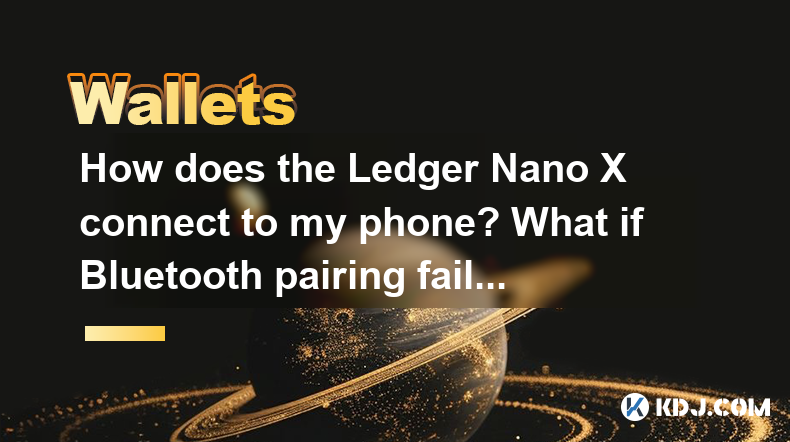
How does the Ledger Nano X connect to my phone? What if Bluetooth pairing fails?
May 02,2025 at 07:07pm
The Ledger Nano X is a popular hardware wallet designed to securely store your cryptocurrency. One of its key features is the ability to connect to your smartphone via Bluetooth, allowing for a seamless and convenient user experience. In this article, we will explore how to connect your Ledger Nano X to your phone and what to do if Bluetooth pairing fai...
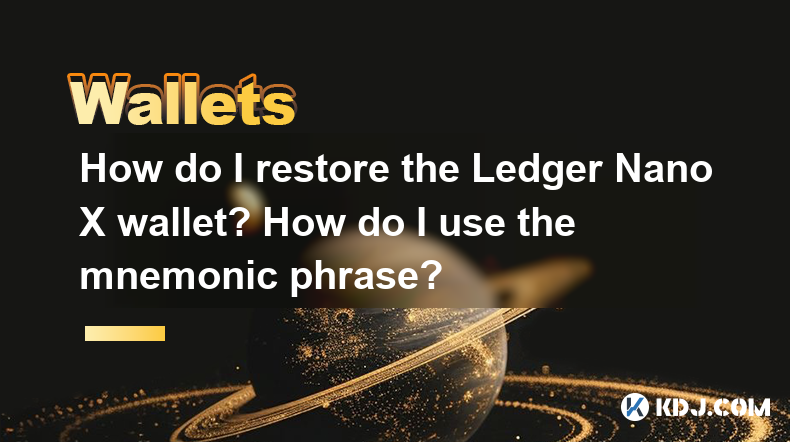
How do I restore the Ledger Nano X wallet? How do I use the mnemonic phrase?
May 04,2025 at 08:07am
Restoring a Ledger Nano X wallet and using its mnemonic phrase are critical processes for any cryptocurrency user. These steps ensure that you can recover your funds if your device is lost, damaged, or stolen. This article will guide you through the detailed process of restoring your Ledger Nano X wallet using the mnemonic phrase, ensuring you can acces...

How do I enable two-factor authentication on the Ledger Nano X? What are the security options?
May 02,2025 at 09:49pm
Enabling two-factor authentication (2FA) on your Ledger Nano X is a critical step in securing your cryptocurrency assets. The Ledger Nano X offers robust security options that enhance the protection of your digital wealth. In this article, we will guide you through the process of enabling 2FA on your Ledger Nano X and explore the various security featur...

How do I export the Ledger Nano X transaction history? How long can the data be saved?
May 04,2025 at 07:21am
Introduction to Ledger Nano X and Transaction HistoryThe Ledger Nano X is a hardware wallet designed to store your cryptocurrency safely. It supports a wide range of cryptocurrencies and offers robust security features. One of the essential aspects of managing your cryptocurrencies is keeping track of your transaction history. The Ledger Nano X allows y...

How does the Ledger Nano X sync with Ledger Live? What if the sync fails?
May 04,2025 at 12:07pm
The Ledger Nano X is a popular hardware wallet that allows users to securely manage their cryptocurrency assets. One of the key features of the Ledger Nano X is its ability to sync with the Ledger Live application, which provides a user-friendly interface for managing your crypto portfolio. In this article, we will explore how the Ledger Nano X syncs wi...

How do I send cryptocurrency with the Ledger Nano X? What are the transaction confirmation steps?
May 03,2025 at 05:01am
Sending cryptocurrency using the Ledger Nano X involves a series of steps that ensure the security and accuracy of your transactions. This process is designed to be user-friendly while maintaining the high level of security that Ledger devices are known for. In this article, we will guide you through the process of sending cryptocurrency with the Ledger...

How does the Ledger Nano X connect to my phone? What if Bluetooth pairing fails?
May 02,2025 at 07:07pm
The Ledger Nano X is a popular hardware wallet designed to securely store your cryptocurrency. One of its key features is the ability to connect to your smartphone via Bluetooth, allowing for a seamless and convenient user experience. In this article, we will explore how to connect your Ledger Nano X to your phone and what to do if Bluetooth pairing fai...

How do I restore the Ledger Nano X wallet? How do I use the mnemonic phrase?
May 04,2025 at 08:07am
Restoring a Ledger Nano X wallet and using its mnemonic phrase are critical processes for any cryptocurrency user. These steps ensure that you can recover your funds if your device is lost, damaged, or stolen. This article will guide you through the detailed process of restoring your Ledger Nano X wallet using the mnemonic phrase, ensuring you can acces...
See all articles




















































































